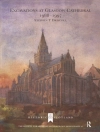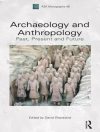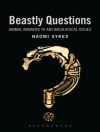Knossos, like the Acropolis or Stonehenge, is a symbol for an entire culture. The Knossos Labyrinth was first built in the reign of a Middle Kingdom Egyptian pharaoh, and was from the start the focus of a glittering and exotic culture. Homer left elusive clues about the Knossian court and when the lost site of Knossos gradually re-emerged from obscurity in the nineteenth century, the first excavators – Minos Kalokairinos, Heinrich Schliemann, and Arthur Evans – were predisposed to see the site through the eyes of the classical authors. Rodney Castleden argues that this line of thought was a false trail and gives an alternative insight into the labyrinth which is every bit as exciting as the traditional explanations, and one which he believes is much closer to the truth. Rejecting Evans’ view of Knossos as a bronze age royal palace, Castleden puts forward alternative interpretations – that the building was a necropolis or a temple – and argues that the temple interpretation is the most satisfactory in the light of modern archaeological knowledge about Minoan Crete.
Rodney Castleden
Knossos Labyrinth [PDF ebook]
A New View of the `Palace of Minos’ at Knossos
Knossos Labyrinth [PDF ebook]
A New View of the `Palace of Minos’ at Knossos
قم بشراء هذا الكتاب الإلكتروني واحصل على كتاب آخر مجانًا!
لغة الإنجليزية ● شكل PDF ● صفحات 240 ● ISBN 9780203405000 ● الناشر Taylor and Francis ● نشرت 2002 ● للتحميل 6 مرات ● دقة EUR ● هوية شخصية 2290270 ● حماية النسخ Adobe DRM
يتطلب قارئ الكتاب الاليكتروني قادرة DRM












